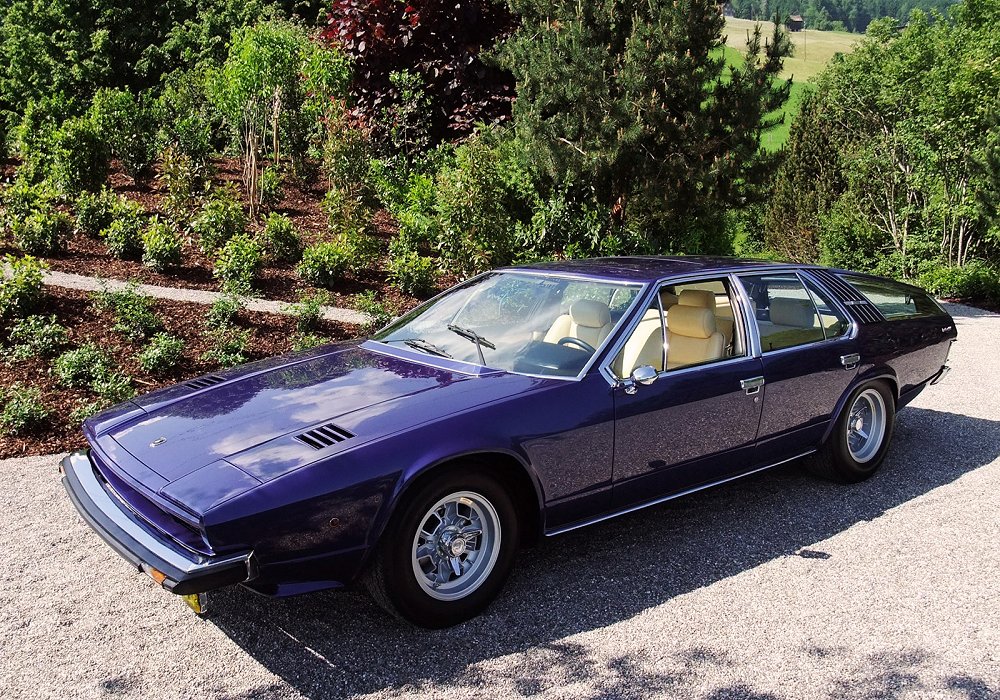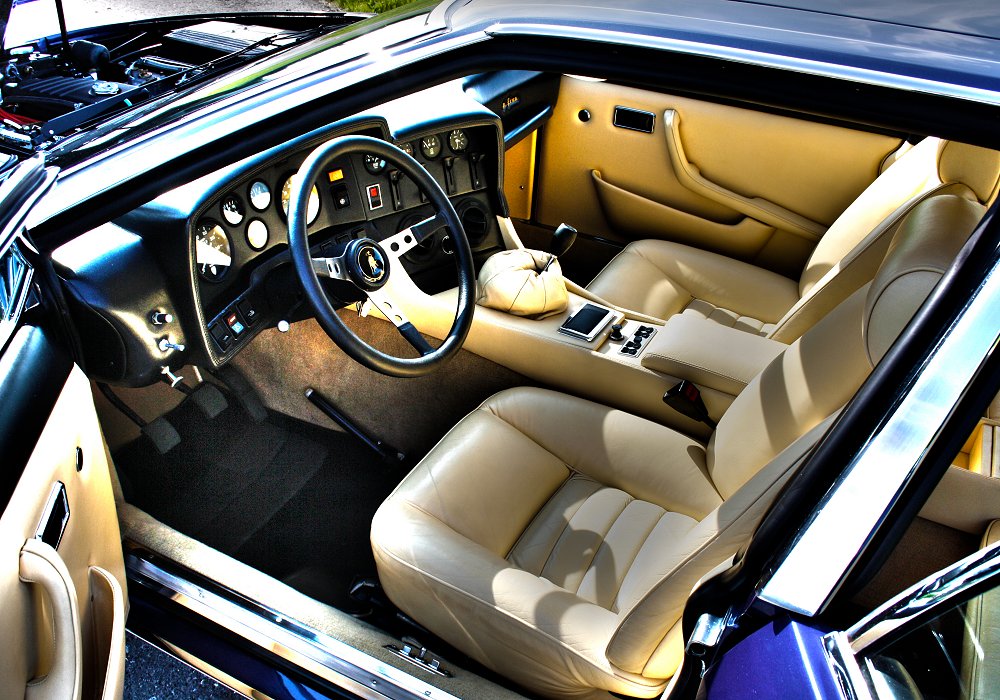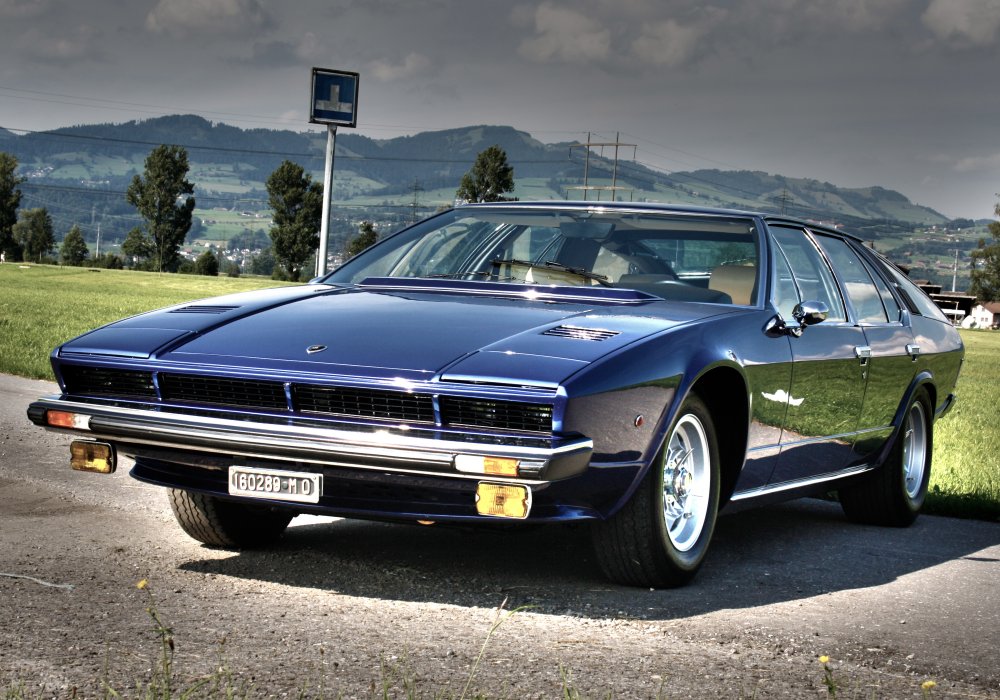Description
The Lamborghini Faena Frua was a unique and elegant four-door grand tourer created in 1978 by the Italian coachbuilder Pietro Frua, based on the chassis of a Lamborghini Espada. It was conceived as an experimental project to explore whether Lamborghini’s bold engineering and V12 performance could be adapted into a refined luxury sedan. The Faena was the only one of its kind ever built—a striking combination of Lamborghini power and Frua’s sophisticated design sensibilities—and it stands today as one of the most distinctive one-off Lamborghinis ever produced.
The Faena’s origins lay in Frua’s long-held fascination with creating luxurious yet sporting four-door coupes. During the 1970s, Frua had already built several such vehicles based on Maserati and Monteverdi platforms, but the Lamborghini Faena was his most ambitious attempt. He began the project independently, purchasing an Espada chassis (number 18224) directly from Lamborghini. The Espada, with its long wheelbase and front-mounted V12, provided the ideal foundation for a four-door transformation, offering both mechanical sophistication and the performance credentials needed to justify a Lamborghini badge.
Frua’s design for the Faena was both graceful and imposing. Measuring nearly five meters in length, it retained some of the Espada’s proportions but reimagined them through Frua’s distinctive lens of late-1970s modernism. The front end was smoother and more upright than the Espada’s, featuring rectangular headlamps and a thin horizontal grille that emphasized width and presence. The sides were long and unbroken, with a clean beltline and sharply creased fenders, while the rear tapered elegantly into a short tail with flush lighting elements. The car’s roofline was slightly higher to accommodate the additional doors, yet Frua managed to maintain balanced proportions and visual flow—a remarkable achievement given the Espada’s original two-door layout.
The most striking feature of the Faena was its four-door configuration, which Frua executed with remarkable craftsmanship. The additional rear doors were rear-hinged, creating a dramatic effect when opened, and allowed passengers to enter the rear cabin with ease. Despite the structural challenges, Frua preserved the car’s rigidity and balance. The large glass area, including a nearly continuous wraparound rear window, gave the cabin a sense of openness and luxury, while the overall silhouette retained the unmistakable elegance of a grand tourer rather than a traditional sedan.
Under the long bonnet sat Lamborghini’s legendary 3,929 cc V12 engine, the same unit that powered the Espada. Producing around 350 horsepower and paired with a five-speed manual transmission, the Faena offered the same commanding performance as its two-door sibling. Power was delivered to the rear wheels, and the car was equipped with independent suspension, ventilated disc brakes, and the Espada’s robust chassis, ensuring that it drove with the poise and confidence expected of a Lamborghini. Though it was a large and luxurious vehicle, the Faena was capable of reaching speeds well over 240 km/h (150 mph), making it one of the fastest four-door cars of its time.
The interior of the Faena reflected Frua’s attention to luxury and detail. The cabin was upholstered in fine leather and featured extensive wood trim, combining Italian craftsmanship with the understated sophistication typical of Frua’s designs. The dashboard layout was similar to that of the Espada but reimagined with additional comfort features for rear passengers. The spacious rear compartment offered individual seating, generous legroom, and amenities that positioned the Faena as a grand touring limousine rather than a sports car. Despite its handcrafted opulence, the overall design remained functional and driver-focused, maintaining the spirit of Lamborghini performance beneath its luxurious presentation.
The Faena made its public debut at the 1978 Turin Motor Show, where it immediately drew attention for its striking proportions and seamless blend of performance and luxury. Though it was well received as a concept, it remained a one-off creation. Lamborghini, struggling financially during the late 1970s, had little capacity to pursue niche projects, and Frua’s proposal to produce a small series of Faenas never progressed beyond the prototype stage. The sole car built remained in Frua’s personal collection for some years before passing into private ownership.
Over time, the Faena became a prized collector’s item, admired not only for its rarity but for its significance as one of the earliest attempts to create a four-door Lamborghini—a concept that would not return in earnest until decades later with the Estoque and Urus. It represented a bold vision that was far ahead of its time, proving that Lamborghini’s signature V12 power and style could be translated into an elegant, executive form without losing their distinctive character.
Today, the Lamborghini Faena Frua stands as a fascinating artifact in the company’s history: a bridge between the radical supercars of the 1970s and the high-performance grand tourers that would follow. Its graceful design, handcrafted detail, and technical sophistication make it one of the most remarkable bespoke Lamborghinis ever built—a singular creation that captures both Frua’s artistic vision and Lamborghini’s relentless pursuit of individuality.



